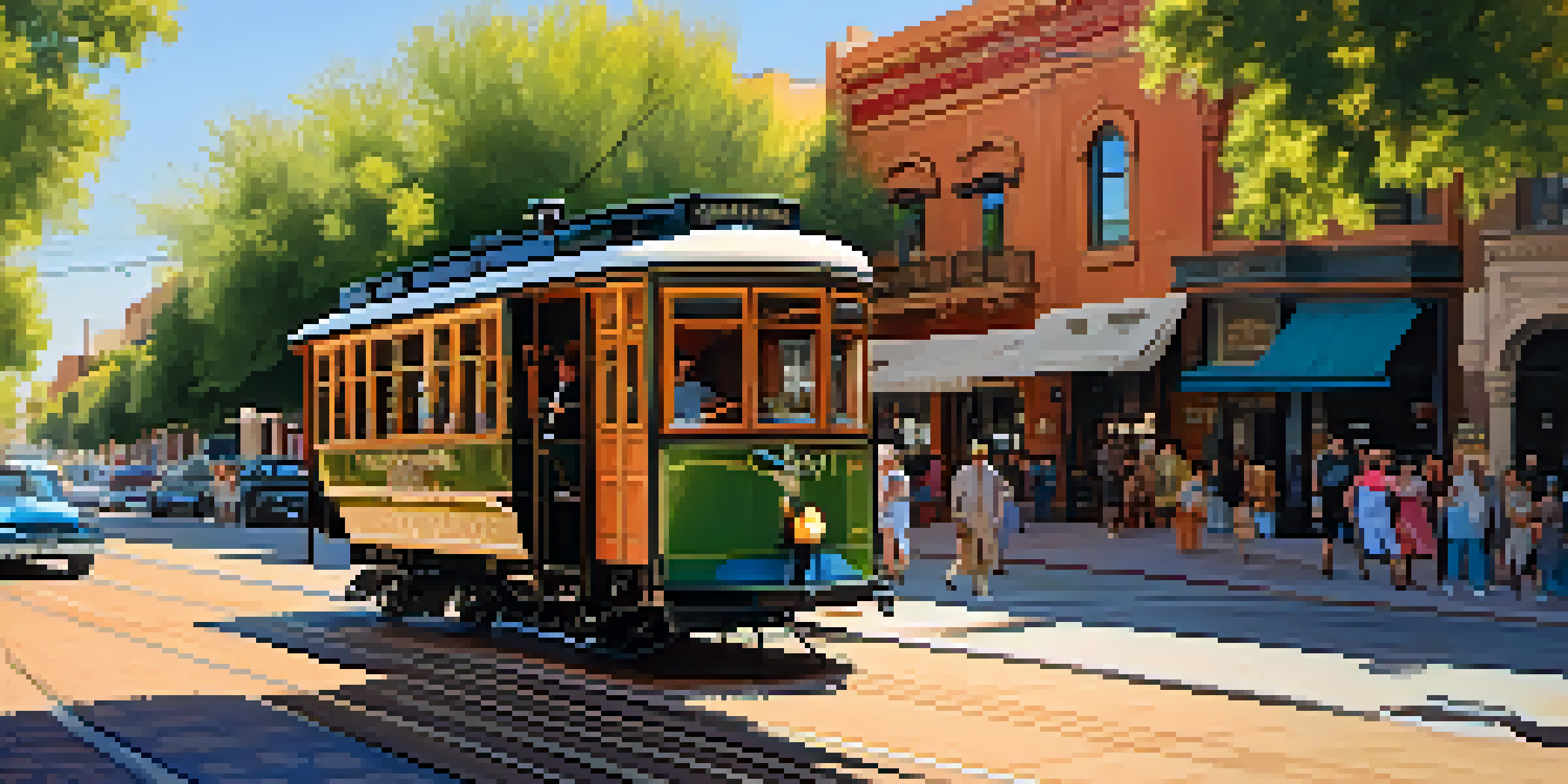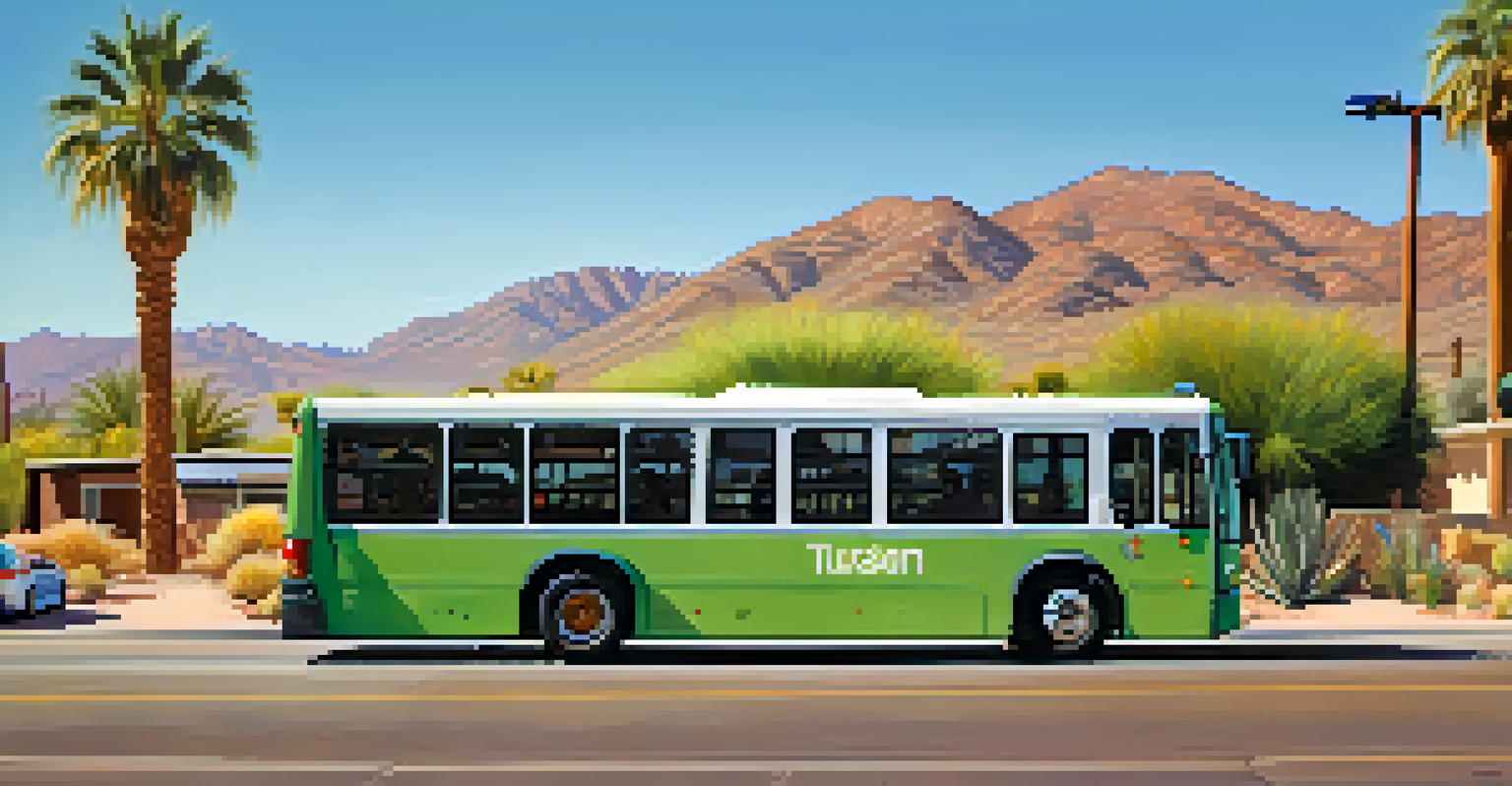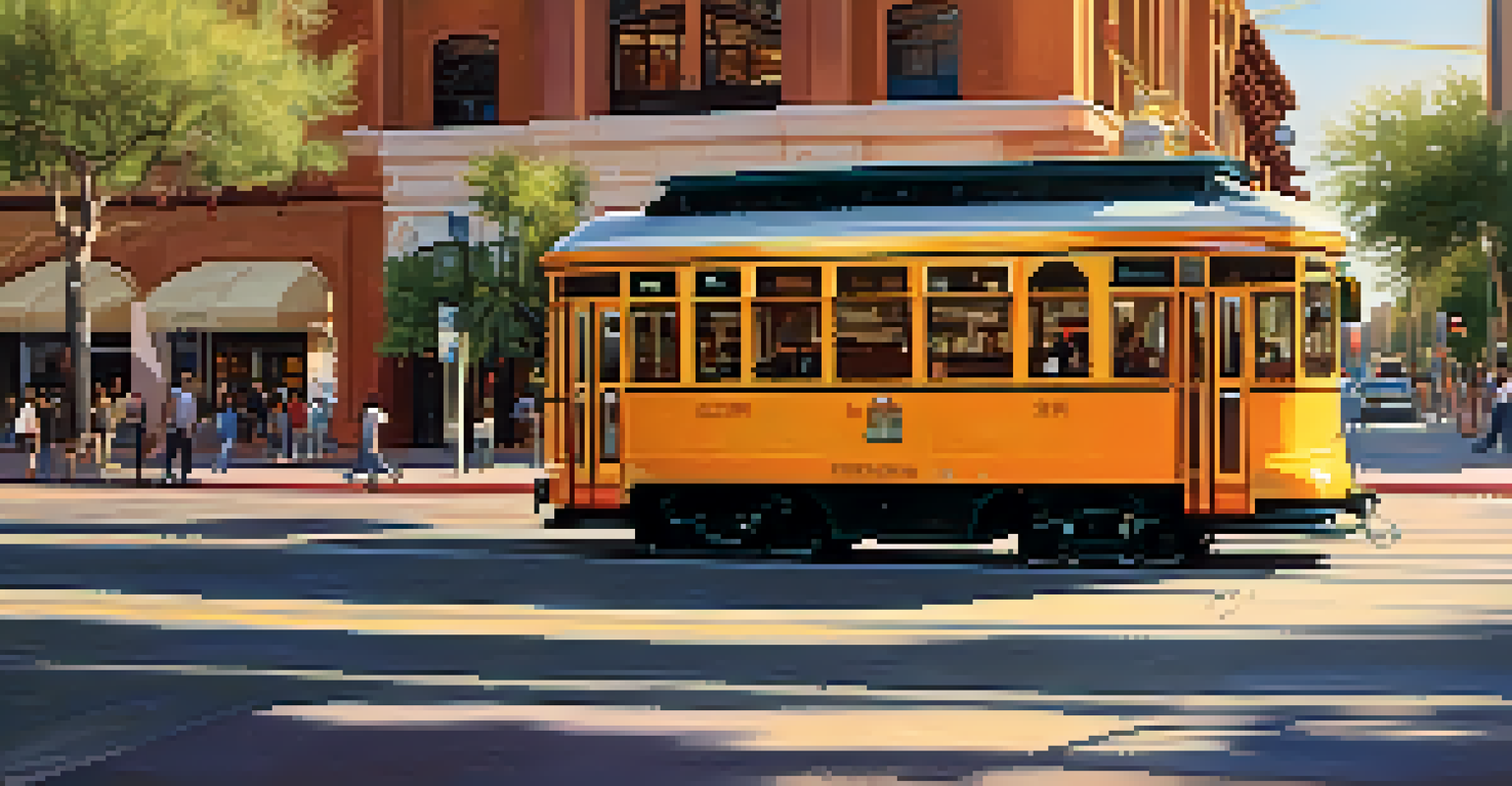Public Transportation in Tucson: Key Milestones and Developments

The Early Days of Tucson Public Transit
Tucson's public transportation has roots that date back to the late 19th century when horse-drawn streetcars began operating. This early system laid the groundwork for public transit in the city, allowing residents to travel more easily. As Tucson grew, so did the demand for reliable transportation, leading to the introduction of electric streetcars in the early 1900s.
Public transportation is a key component of a sustainable urban environment.
The electric streetcars transformed how people moved around the city, connecting neighborhoods and facilitating commerce. However, the rise of automobiles in the mid-20th century shifted the focus away from public transit. Despite this, the legacy of those early transit systems still influences Tucson's transportation today.
In essence, the early days of public transit in Tucson were characterized by innovation and adaptation. The introduction of streetcars marked a pivotal moment, setting the stage for the developments that would follow in the coming decades.
The Birth of Sun Tran: A New Era
In 1975, Tucson took a significant leap forward with the establishment of Sun Tran, the city's public bus system. This marked a decisive shift from streetcars to a more modern form of public transportation. Sun Tran aimed to provide accessible and efficient transit options for Tucson residents and visitors alike.

Over the years, Sun Tran has expanded its services and routes, adapting to the changing needs of the community. With a focus on sustainability, the agency has introduced eco-friendly buses, including hybrids and electrics, to reduce environmental impact. This transition showcases Tucson's commitment to modernizing its public transportation system while also being mindful of the planet.
Tucson's Transit History Matters
Tucson's public transportation has evolved from horse-drawn streetcars to modern systems, shaping the city's mobility landscape.
The creation of Sun Tran not only improved public transit but also redefined how residents viewed transportation in Tucson. It represented a commitment to creating a more connected city, paving the way for future enhancements and developments in public transportation.
Key Developments in the 21st Century
The 21st century has brought about several key developments in Tucson's public transportation landscape. One notable initiative is the introduction of the Sun Link Streetcar, which began operation in 2014. This modern streetcar system connects downtown Tucson with the University of Arizona, enhancing mobility for students and residents alike.
The best way to find yourself is to lose yourself in the service of others.
In addition to the streetcar, Sun Tran has embraced technology, implementing real-time tracking systems for buses. This advancement improves the user experience by allowing passengers to plan their journeys more effectively. Such developments reflect a growing trend towards smarter, more efficient public transportation systems.
As the city continues to grow, these developments in public transit emphasize the importance of accessibility and convenience. They not only connect various neighborhoods but also promote a more sustainable urban lifestyle, encouraging residents to opt for public transit over personal vehicles.
Community Engagement and Public Transit
Community engagement is crucial for the success of Tucson's public transportation initiatives. The city has made concerted efforts to involve residents in decision-making processes related to transit improvements. By holding public forums and surveys, Tucson ensures that the voices of its residents are heard and considered.
This approach helps tailor transit solutions to the specific needs of the community, fostering a sense of ownership and pride in the system. When residents feel included, they are more likely to use public transit and advocate for its continued development. This creates a positive feedback loop that benefits everyone.
Sun Tran Transformed Public Transit
The establishment of Sun Tran in 1975 marked a significant shift towards more accessible and eco-friendly public transportation options.
Ultimately, community engagement strengthens the relationship between Tucson's residents and their public transportation system. It highlights the importance of listening to the needs of the community, ensuring that public transit evolves in a way that truly serves its users.
Innovative Solutions for Future Transit
Looking ahead, Tucson is exploring innovative solutions to enhance its public transportation system. This includes the potential for expanding the streetcar network further into underserved areas, ensuring that more residents have access to reliable transit. Additionally, the city is investigating the implementation of on-demand transit services to complement existing routes.
These forward-thinking strategies aim to meet the changing needs of Tucson's population. By incorporating technology and flexibility into public transit, the city can provide a more responsive and user-friendly experience. This innovation is essential for attracting new riders and promoting sustainable transportation options.
As Tucson embraces these innovative solutions, it sets an example for other cities facing similar challenges. The commitment to improving public transportation demonstrates a forward-looking vision that prioritizes accessibility, sustainability, and community well-being.
Challenges Facing Tucson's Public Transit
Despite the progress made, Tucson's public transportation system faces several challenges. Funding remains a critical issue, as maintaining and expanding services requires significant financial resources. Without adequate funding, the city may struggle to implement necessary improvements and innovations.
Another challenge is the need to increase ridership, especially among those who may not currently consider public transit as a viable option. To encourage more residents to use public transportation, Tucson must continue to promote its benefits, such as cost savings and environmental impact. This requires effective marketing and outreach strategies.
Future Innovations Ahead for Transit
Tucson is exploring innovative solutions, such as expanding the streetcar network and on-demand services, to enhance public transit accessibility.
Addressing these challenges is vital for Tucson's public transportation future. By tackling funding issues and enhancing ridership, the city can ensure that its transit system remains a vital component of urban life, contributing to sustainability and accessibility for all.
The Future of Public Transportation in Tucson
The future of public transportation in Tucson is bright, with numerous opportunities for growth and enhancement on the horizon. As the city continues to develop, so too will its transportation infrastructure, incorporating more sustainable practices and technologies. This evolution is vital for keeping pace with the demands of a growing population.
Furthermore, ongoing collaborations between city officials, community members, and transit agencies will be essential. These partnerships can drive innovative projects that not only improve public transit but also bolster the local economy. A well-connected transportation system supports business growth and promotes tourism, benefiting the entire community.

In conclusion, Tucson's public transportation journey has been marked by significant milestones and exciting future prospects. As the city embraces innovation and community involvement, it is poised to create a transit system that meets the needs of its residents while contributing to a sustainable urban environment.